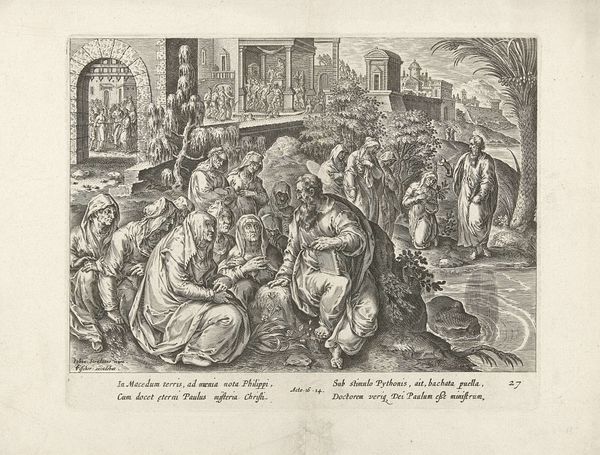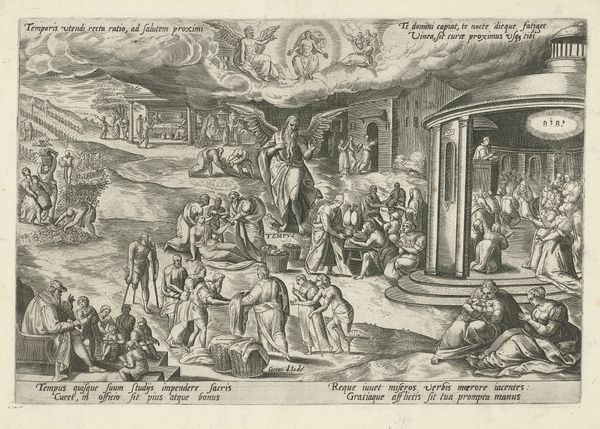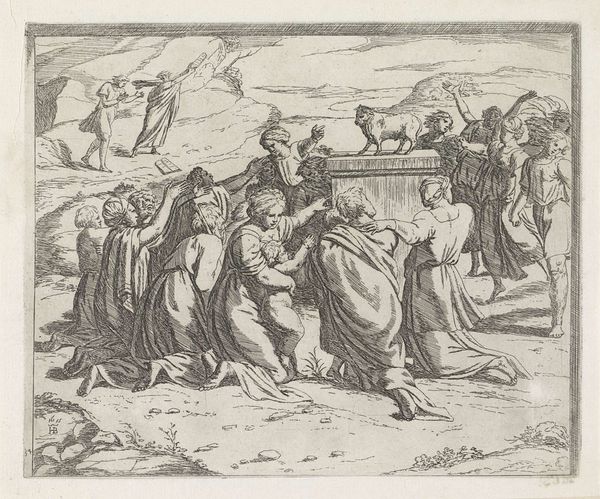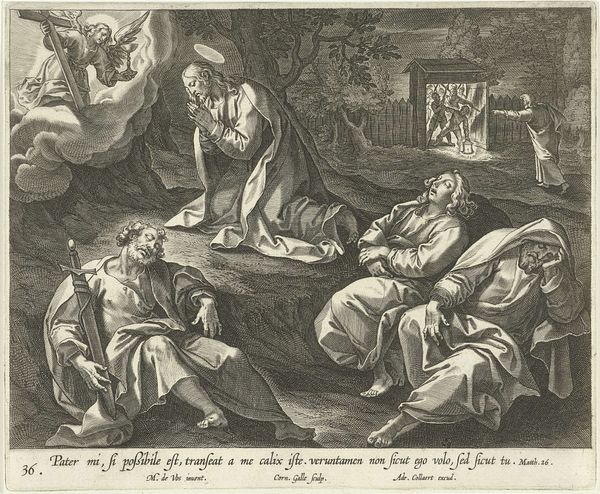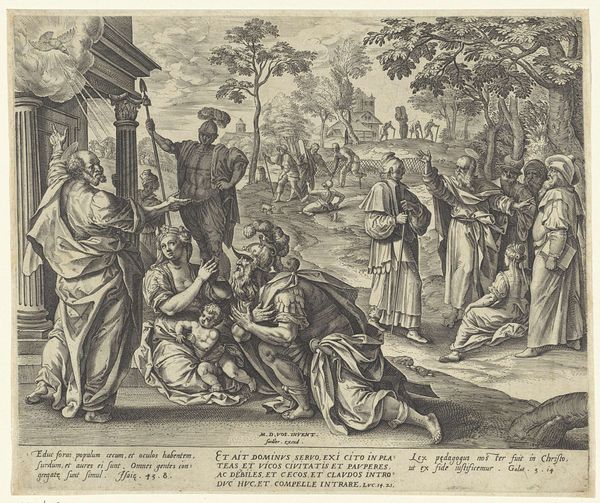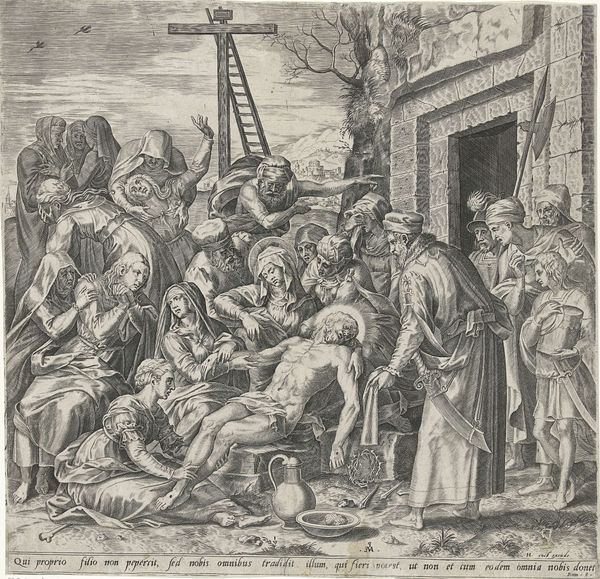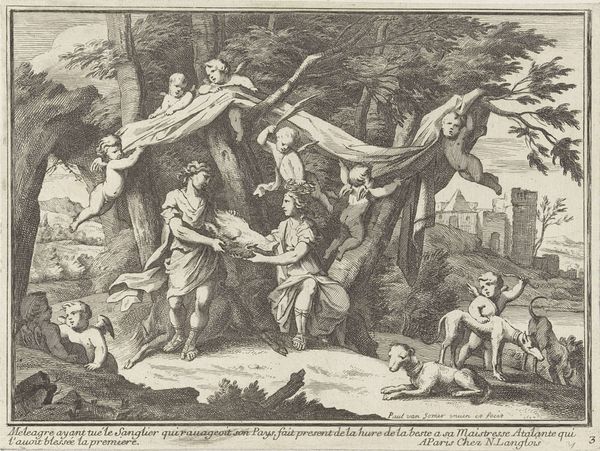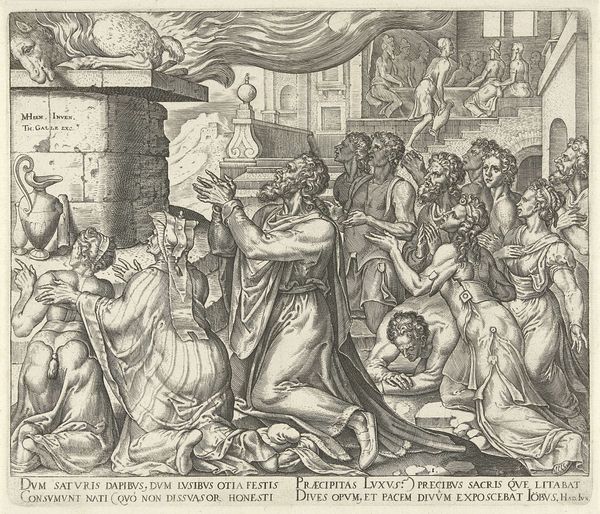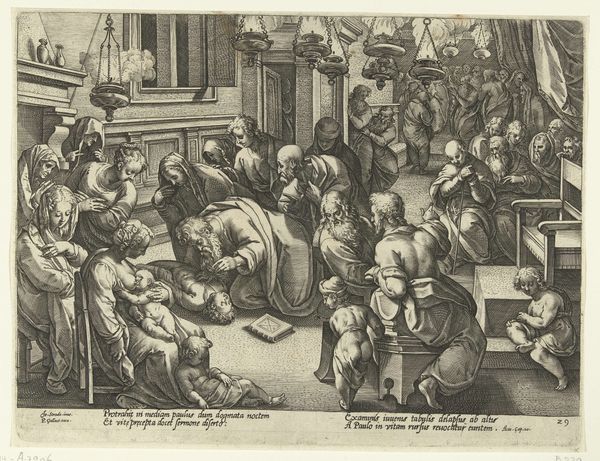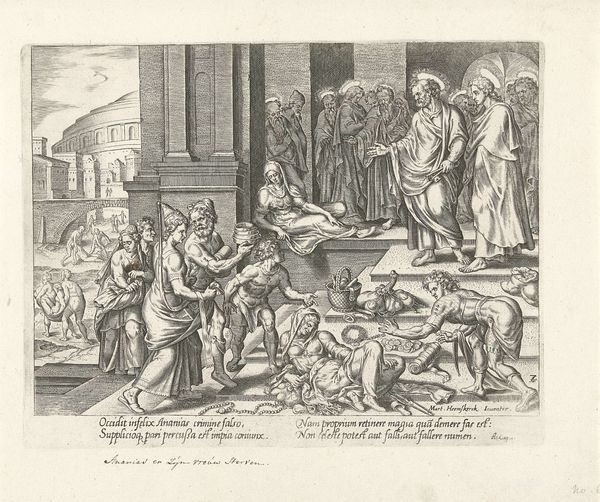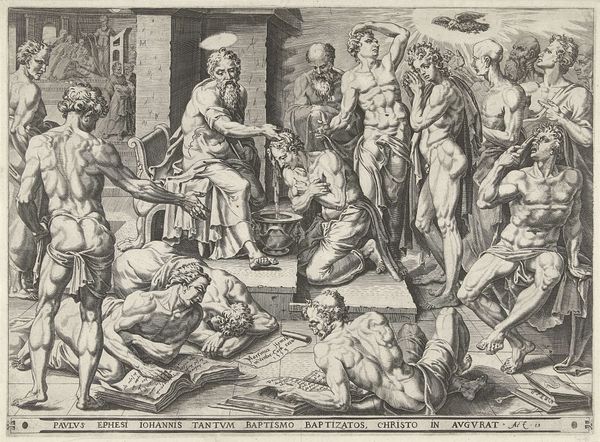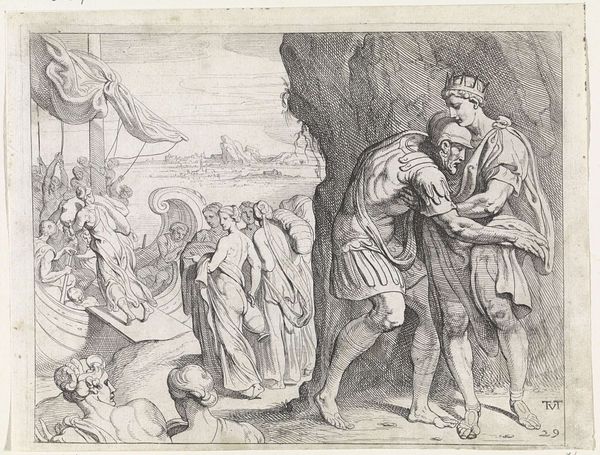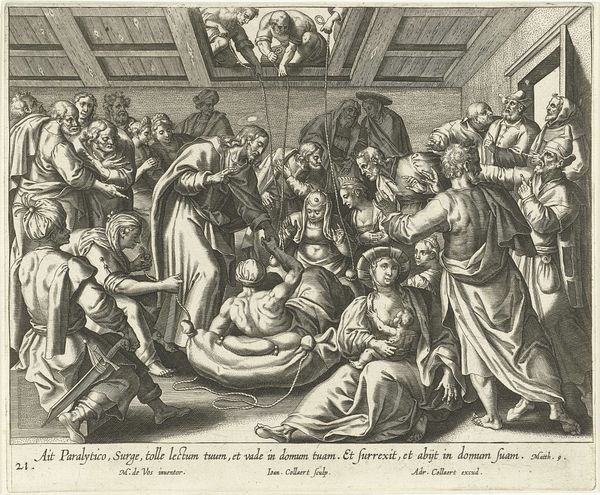
engraving
#
baroque
#
figuration
#
11_renaissance
#
history-painting
#
engraving
Dimensions: height 179 mm, width 220 mm
Copyright: Rijks Museum: Open Domain
Curator: This engraving, "The Raising of Lazarus", was created between 1598 and 1618 by Jacques de Bie, after a design by Maerten de Vos. The detailed scene reflects the Baroque interest in drama and emotion. Editor: Oh, wow, it's quite a powerful image! There’s this dramatic spotlight effect focusing right on Lazarus, newly risen and looking rather buff for someone just out of the tomb. Curator: The choice of engraving as a medium is also significant. It allows for intricate detailing, contributing to the piece's narrative depth and facilitating reproduction for wider distribution and theological messaging at that time. Consider how this medium itself democratized the image. Editor: Yes, exactly, but I'm also drawn to the faces around Lazarus, the expressions ranging from awe to a kind of, dare I say, slightly skeptical bewilderment. The body language speaks volumes. Someone is quickly unwrapping his shrouds, and, what's that in the foreground, a shovel and pickaxe?! Curator: These tools point to the labor involved – not only in burying the dead but, perhaps more symbolically, the labor and craft in the physical process of engraving to propagate the image widely. The viewer becomes a participant, considering these historical modes of production alongside their emotional reaction. Editor: Thinking about the physical… the tomb itself is practically heaving. Lazarus emerging almost like a cork popping from a bottle. The textures and details make me almost smell the earthy tomb air! And the light versus shadow… it’s pure theatrical magic! I wonder, did Jacques de Bie realize what he was creating would be used for good as well as indoctrination? Curator: Regardless, it's an example of an important craft practice being adapted to very powerful social means. Editor: That makes a good final thought… Makes you consider what resurrection looks like today too... for ideas, and for objects, doesn't it?
Comments
No comments
Be the first to comment and join the conversation on the ultimate creative platform.
